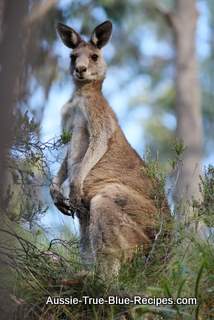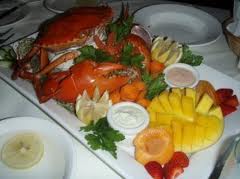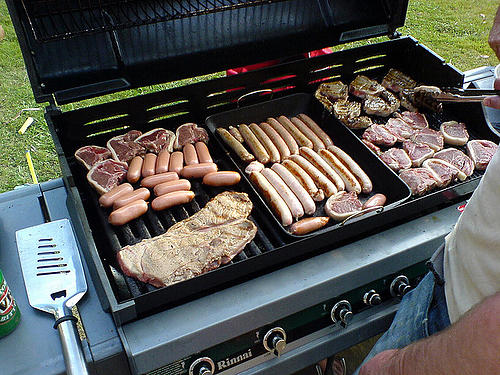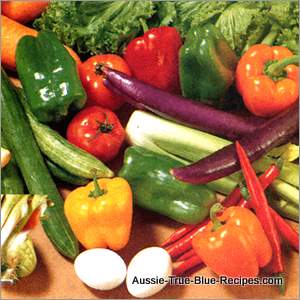|
Australia
Australia! What a wonderful place. In order to understand "true blue" and "fair dinkum" Aussie cooking, it's first necessary to understand the various cultural, climatic and seasonal factors that have influenced flavour, technique and preferences. I love that this country is multi-cultural - and that my children have grown up at school learning Indonesian and Italian - alongside friends from South Africa, India, Pakistan, Malaysia, Lebanon and Britain - to name just a few. I love that the multiculturalism in a relatively new country, has led to my children, and later on their children, being accepting of all fellow human beings and embracing differences, rather than the way it was around the world in generations past. It is definitely a step in the right direction for world peace, and love for our fellow man. If, after reading this page, you think you would like to visit or live in Australia, visit the Department of Immigration website for more details about this beautiful country, and obtaining a suitable Visa for your needs and requirements.
The Land Down Under and the PopulationThe "land down under" has a land mass of 7692030 km², approximately 32 times larger than the United Kingdom. It is located on the Indo-Australian plate, and surrounded by ocean - effectively making it the biggest island in the world. It is the only country in the world that is a continent, a country and an island - all in one. It comprises 6 States and 2 Territories. As at the date and time of composing this particular page, the population of was projected to be 22,617,920. The population is not widely distributed with approximately 85% of aussies occupying only 1% of the continent. Most people live in the capital cities and along the coast.
This is due mostly to the comparatively large area of the country that makes up the Deserts. Most of the deserts lie in the central and north-western part of the country. The largest part of this sunburned country is desert or semi-arid. The size of the deserts combined is 1,371,000 km²(529,000 sq mi), and occupy 38% of the continent - what we commonly refer to as "The Outback". I spent 3 years in the Outback when I was newly married, and although at first I didn't quite know what I had got myself into - I soon discovered the beauty and serenity to be found in the great Australian Bush. I'm quite lost for words whenever I try to describe something that really has to be experienced to be understood. This said, if you are interested in learning more about the great Australian Outback click on the hyperlink, and you will be directed to a Site devoted to the topic, along with a travel guide relevant to the many wonderful and various Outback adventures to be found in this great country - Australia. One of my Sitesell colleagues has written extensively about Gorges from around the World. He has devoted a page exclusively to Carnavon Gorge which demonstrates vividly just one of the well-kept secrets that Australia holds. If you're interested in visiting central and tropical Queensland, FC4 Magazines has already done the research for you.
Indiginous Australians and Multiculturalism
Indigenous Australians are the original inhabitants of the continent and nearby islands. Indigenous Australians are distinguished as either Aboriginal or Torres Strait Islanders, who currently together make up more than 2.5% of Australia's population. The rest of the population (around 20 million people) is made of people from many different countries, with people of British descent still making up the largest single group.
There is a common misapprehension that Indigenous people mostly live in the bush, and it’s true that a bigger percentage of Indigenous people live in remote areas than other people. Overall though, most Indigenous people live in large regional centres and cities like Sydney.
Indigenous Art, History and Culture is a deeply meaningful component of aboriginal heritage, and family values. There are several Aboriginal Art Galleries where you can purchase your own original Aboriginal canvass, or just support the unique artistic talent. The meaning of multiculturalism has changed enormously since its formal introduction to the country. Originally it was understood by the mainstream population as a need for acceptance that many members of the Australian community originally came from different cultures and still had ties to it. However, it came to mean the rights of migrants within mainstream Australia to express their cultural identity. It is now often used to refer to the fact that very many people in Australia have, and recognize, multiple cultural or ethnic backgrounds. The Department of Immigration and Multicultural Affairs (DIMA) in Australia estimated that, in 2005, 25% of the Australian workforce was born outside of the country and 40% had at least one parent born outside of Australia.
Australian IslandsWhat is little known, is that Australia has 8222 islands that fall within its maritime borders. Although I have personally visited a great many of the Australian Islands along the East Coast - the Great Barrier Reef, I am quite inadequate when it comes to attempting to describe their beauty, pristine beaches, peacefulness, and hidden adventures. However, I have come across a truly wonderful website that does a superb job of showing you the "real" Cape York area of Australia - and this website goes a long way towards showing you some of the beauty this area offers. If this website doesn't convince you to visit Australia, nothing will.
The Great Barrier Reef can be seen from outer space and is the world's biggest single structure made by living organisms. The Great Barrier Reef has long been known to and used by the Aboriginal Australian and Torres Strait Islander peoples, and is an important part of local groups' cultures and spirituality. The reef is a very popular destination for tourists, especially in the Whitsunday Islands and Cairns regions. If you are interested in learning more about our beautiful coastal hideaways, please visit australiaislandresorts.com for information.
The Australian ClimateThis continent experiences a variety of climates due to its size. The weather can range from below zero temperatures in the Snowy Mountains to intolerable heat in the north-west. It is considered to be one of the driest continents on earth. The temperate south has cool, wet winters and warm, dry summers. In the north, a tropical climate prevails with a warm, dry season and a hot, wet season. The extreme north-west experiences the ends of the monsoon systems, while the mountains of the south-east attract seasonal snow to form the Alpine snowfields. The temperatures vary from an average 30 degrees C in midsummer in the Red Centre, to an average of 6 degrees C in the highlands in winter. The inland deserts can remain totally dry for years whilst rains can produce floods. Being in the Southern Hemisphere its seasons are in reverse to Europe and America. The ideal time to visit the north, particularly the Northern Territory's Kakadu National Park is early in the dry season (around May.) The Dry Season, April - October, is also a good time to visit northern Queensland's beaches and rain forests.
Australian AnimalsAustralia is home to many animals, birds, reptiles and insects not commonly found on other continents. The most well-known of these are Kangaroo, the Koala and the Emu.

Although Kangaroos are majestic and intruiging creatures - they are a national symbol of Australia and are on our Coat of Arms (along with the Emu), they are sometimes considered a pest in the Australian Outback, where they often destroy farming crops and fences. They are not farmed to any extent, but wild kangaroos are shot for meat, leather hides, sport, and to protect grazing land for sheep and cattle. Contrary to common international belief - you will not see a Kangaroo jumping down the street in one of the major cities or towns - though you will commonly see them on the highways that connect towns, and in small community townships. Although there is some controversy, harvesting kangaroo meat has many environmental and health benefits over traditional meats.
Australian CuisineAustralian cuisine refers to the cuisine of the Commonwealth of Australia and its preceding indigenous and colonial societies. There are several websites (as well as this one) that focus on Australian cuisine - but if you're looking for Home Cooking On A Budget click on this link. This website focuses on tasty, nutritious meals for families who want to eat healthily. Indigenous Australians have occupied the lands of Austalia for some 40,000-60,000 years, during which time they developed a unique hunter gatherer diet, known as "bush tucker", drawn from regional Australian flora and fauna—such as the kangaroo. Australia's long coastline has ensured that seafood has been an important staple - with Barramundi, Mud Crab, Prawns (shrimp); Sand Crab, Fresh Rock Oysters, Lobster, Perch, Snapper to name but a few of the delicacies commonly eaten in Australia.
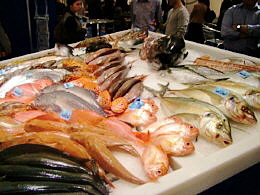
Australia was, from 1788 to 1900, a collection of British colonies in which culinary tastes were strongly influenced by British and Irish traditions - and agricultural products such as beef cattle, sheep and wheat became staples in the national diet. Post-war Australia's multicultural immigration program lead to a diversification of the cuisine of Australia, particularly under the influence of Mediterranean and South East Asian migrants. Australian cuisine of the first decade of the 21st century shows the influence of globalisation. Organic and biodynamic, kosher and halal foods have become widely available and there has been a revival of interest in bushfoods. British traditions persist to varying degrees in domestic cooking and the takeaway food sector, with roast dinners, the Australian meat pie and fish and chips remaining popular, but there are also new elements featured in these foods. To barbecue meats in the open air is considered a treasured national tradition.
Australia is often referred to as "the lucky country" and "the land of plenty" - and part of the reason for this is our ready access to fresh fruit, vegetables, meat and fish.
Unlike many countries, our soil is rich in vitamins and minerals - and crops grow readily - provided the climate co-operates.
|






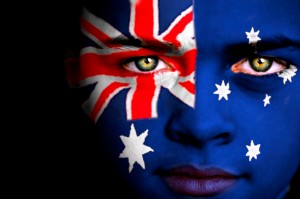
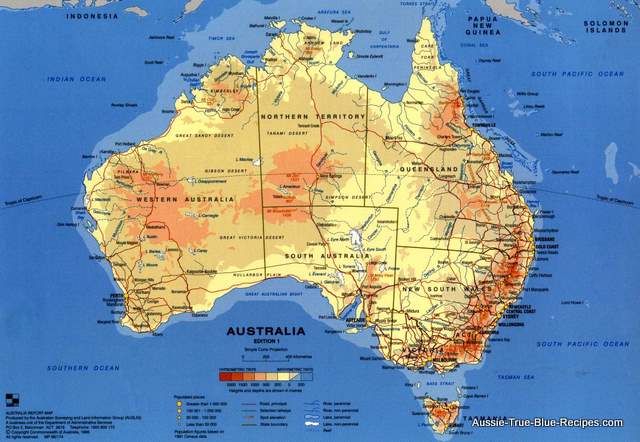
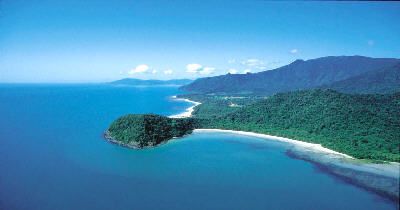
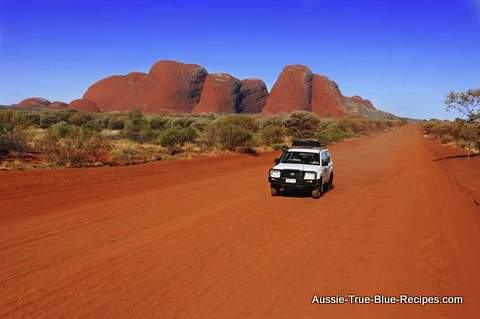
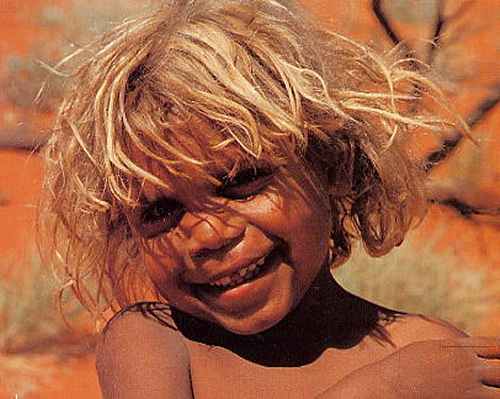
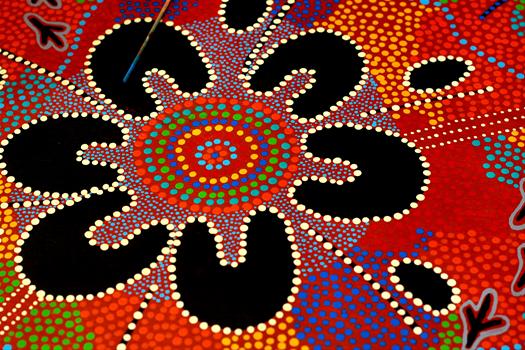
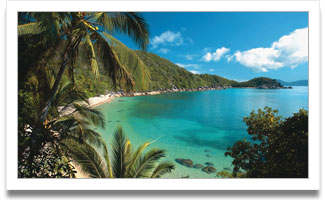 The Great Barrier Reef is the world's largest reef system composed of over 2,900 individual reefs and 900 islands stretching for over 2,600 kilometres - over an area of approximately 344,400 square kilometres. The reef is located in the Coral Sea, off the coast of Queensland in north-east Australia.
The Great Barrier Reef is the world's largest reef system composed of over 2,900 individual reefs and 900 islands stretching for over 2,600 kilometres - over an area of approximately 344,400 square kilometres. The reef is located in the Coral Sea, off the coast of Queensland in north-east Australia.
